We toss these terms around all the time like so much popcorn in a theater, but there are still a few things to which they actually apply. Like The L Word.
It’s been ten years since Showtime debuted The L Word, the first TV show about lesbians.
I can still call up the level of excitement and anticipation I had waiting for the screener from the network. This wasn’t going to be a few never-met-anyone-like-this-in-my-life lesbians stuck into a show like Queer as Folk or dropped randomly (and singly, because there was no one else to be lesbians with) into some otherwise straight drama on the tube. This was going to be real.
Why? Because Ilene Chaiken, the writer, producer, director and co-creator was herself a real-life lesbian. An out lesbian. A lesbian with a partner and kids and everything. And she was in her mid-40s and had been working in Hollywood forever, so she knew how to get things done, which meant The L Word wasn’t going to a pilot that went nowhere, or a series that had two episodes and then maybe went to video.
This was going to be real. This was going to be the TV show we’d all been waiting for since our very first junior high crush on a girl.
I’ve been doing a weekly TV column, The Lavender Tube, for 20 years now. In 2004, I’d already been trying to find LGBT tidbits in straight TV for a decade. So ten years in, to have The L Word land on my desk was like manna from heaven, a gift from the goddesses.
And I hadn’t even met Shane and Papi yet. Or Jenny. Or Marina. Or seen what Pam Grier looked like all those years after Foxy Brown. Or...
Yeah. It was like that.
Watching the first few episodes was like a cold drink after a long thirst. There was everybody’s crush from Flashdance, Jennifer Beals as Bette, the woman who would hold it all together in her marriage with Tina (Laurel Holloman). There were bodies–lesbian bodies and lesbian kissing and it wasn’t porn–in the very first episode. On TV. These weren’t the neutered TV lesbians we were used to who pined and yearned after straight women. These were lesbian lesbians.
It was like coming out all over again.
Of course as a critic, I was critical. All the women were great looking and the only woman of even a little size in the whole cast was Grier. And until Papi came along, Katherine Moennig’s Shane and Mia Kirschner’s Jenny were the butchest characters on The L Word which was not all that butch, even if Shane broke femme hearts in the traditional butch notch-your-belt-and-bedpost way. And everyone was just a little too made up and a little less real than I would have liked, but...
But The L Word girls had drama and lots of it, and that was definitely lesbian. And they had family problems and job problems and some had money and others had none. And there weren’t just white women, there were women of color front and center and until Kalinda (Archie Panjabi) dropped into CBS’s The Good Wife there had never been a hotter lesbian woman of color on the tube than Papi (Javina Gavankar).
The L Word also had deep storylines. It wasn’t all soap opera and sitting around a West Hollywood coffee shop talking about sex. Like when Bette got involved with a deaf woman, Jodi (Marlee Matlin).
But mostly what The L Word did was situate lesbians–single, coupled and serially monogamous–firmly in the TV landscape from which they had previously been absent.
In 2000, a teenager named Bianca Montgomery (Eden Riegel) had come out to her mother, Erica Kane (Susan Lucci) on one of the top-rated soap operas, All My Children. She was the first lesbian character (she never had sex with men; this was not a case of bisexual standing in for lesbian) to be front burner on a daytime soap, which meant we saw her every day. At the same time, The Ellen Show debuted. So there were two daily fixes for lesbians of other lesbians on the tube.
Two.
But Bianca had girlfriend problems all the time, in part because there were no other lesbians in Pine Valley where she lived even though the fictional town was right outside Philadelphia, a city of five million. So Bianca was always getting involved with straight women, and we know how that goes. Bianca epitomized the issue that had existed pre-The L Word: Only one lesbian per show.
And then, suddenly, out of this dearth of lesbian characterizations on TV we had a baker’s dozen of regulars as well as recurring lesbian characters on The L Word. And it was sublime.
The L Word lasted for six seasons, some of which were great and others not-so-great. But even when you thought maybe you were getting tired of the gang, you still knew you could tune in and there they would be–lesbians on television in your very own living room or bedroom or upstairs from your parents’ den.
The thing about being iconic and groundbreaking, however, is making that mark. The L Word made it. In being a "first," the show opened the door and also broadened the landscape. The show had an audience and it wasn’t just lesbians. Initial flurries of "oh no, not lesbians" from the Right faded almost immediately. The L Word had created a subtle, but enduring shift in consciousness.
Sure it had taken a long time. Ellen the sitcom had debuted a decade before The L Word and had run until Will & Grace debuted in 1998. But Ellen coming out had been the kiss-of-death to the ratings and Will & Grace was lesbian-less. Queer as Folk premiered in 2000 on Showtime, but the lesbians were strange and the show was never a hit with women.
Post-The L Word there was the reality series that began soon after The L Word ended and ran until September 2012. But there have been a plethora of The L Word-inspired TV shows since. Orange Is the New Blackjust won the People’s Choice Award for Favorite Streaming Drama Series, beating out an Emmy heavyweight like House of Cards. OITNB is like The L Word in prison. The L Word was the progenitor for OITNB among other shows.
FOX’s Glee debuted in 2009 just as The L Word was ending its run, but echoes of The L Word could readily be seen in Glee’s easy LGBT ensemble casting. (Plus Santana [Naya Rivera] was like a young Papi.)
Grey’s Anatomy debuted on ABC a few months after The L Word and without lesbian characters initially. But clearly the success of The L Word influenced the development of lesbian & bisexual characters in that series. Callie Torres (Sara Ramirez) has remained front burner since she came out five seasons ago.
ABC Family’s series Pretty Little Liars and The Fosters also have obvious links to The L Word’s solid ensemble of lesbians. Would a show marketed primarily to a teen audience like Pretty Little Liars is have dared to incorporate a strong lesbian storyline before The L Word? And The Fosters is, like OITNB, a predominantly lesbian show with all the action revolving around the two central lesbian characters of Lena Adams (Sherri Saum) and Stef Foster (Terri Polo).
The L Word also made more space for lesbian subtext in shows like TNT’s Rizzoli & Isles or American Horror Story: Coven. In proving that a lesbian ensemble series could work, it also proved that a female ensemble show could work. That success inspired myriad lesbian web series including the wildly popular Venice: The Series, which debuted when The L Word ended and is now in its fourth season. Or other, smaller series like The Throwaways andThe N&N Files.
Whether you loved or hated The L Word, it was still a series that mattered. Even if the show just told you who and what you weren’t–you weren’t Alice (Leisha Hailey) but you could definitely be Helena (Rachel Shelley)–it was a show that made you think. The L Word demanded we be given more lesbian characters on the tube. Every season since the show debuted, more and more lesbians have been popping up on the small screen.
So: raise a glass to Lez Girls, or get a coffee at The Planet and replay some of your favorite episodes. The trip down memory lane will remind you of how much The L Word did and how much has yet to happen on the tube.
Victoria A. Brownworth is an award-winning journalist, editor and writer. She has won the NLGJA and the Society of Professional Journalists awards, the Lambda Literary Award and has been nominated for the Pulitzer Prize. She is a regular contributor to The Advocate and SheWired, a blogger for Huffington Post and a contributing editor for Curve magazine and Lambda Literary Review. She won the 2012 Moonbeam Award for historical/cultural fiction for From Where We Sit: Black Writers Write Black Youth. Her novella, Ordinary Mayhem, won Honorable Mention in Best Horror 2012. Her novel, After It Happened will be published in fall 2014. @VABVOX
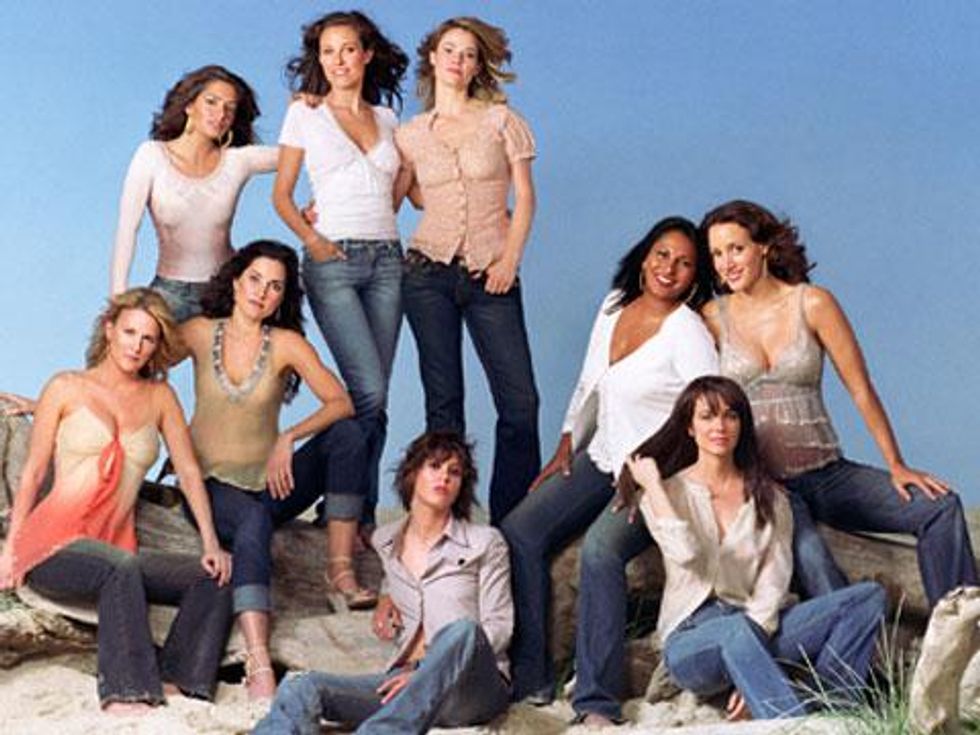











































































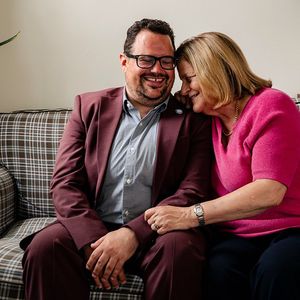



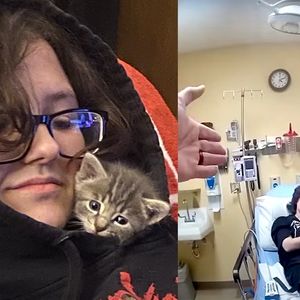














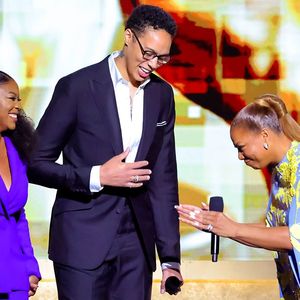
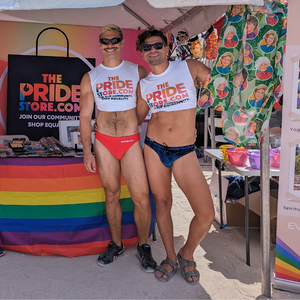


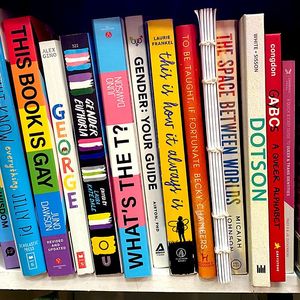
















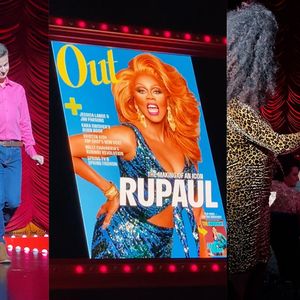

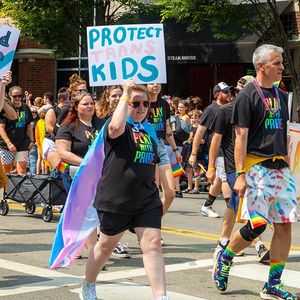


Justin Bieber, Jaden Smith, & Noah Beck kissed their bros & Twitter melted down, it's 2024 y'all